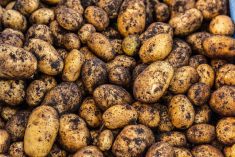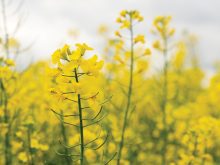Scientists looking for a way to extract the sugars from cornstalks for ethanol production have found an ally in white rot fungus, the American Chemical Society reports in a podcast.
Based on a report by Yebo Li, PhD, in ACS’s journal Industrial & Engineering Chemistry Research, researchers found that by treating stover with the white rot fungus for one month enabled them to extract up to 30 per cent more sugar from the leaves and 50 per cent more from the stalks and cobs.
The need for new sources of ethanol has shifted attention to using stover (the leaves, stalks and cobs), which is the most abundant agricultural residue in the U.S., estimated at 170 million to 256 million tons per year, the report says.
Read Also

Manitoba farmers uneasy on expropriation
Farmland expropriation for Oak Bluff highway project brings process, farmer compensation concerns back to the fore.
The challenge was to find a way to break down the tough material in cobs, stalks and leaves — so that sugars inside can be fermented to ethanol.
Previous studies indicated that a microbe known as a white rot fungus showed promise for breaking down that tough plant material prior to treatment with enzymes to release the sugars. To advance that knowledge, the researchers evaluated how well the fungus broke down the different parts of corn stover and improved the sugar yield.
Because corn leaves are useful for controlling soil erosion when left in the field, harvesting only the cobs and stalks for ethanol production may make the most sense in terms of sustainable agriculture, the report suggests.














